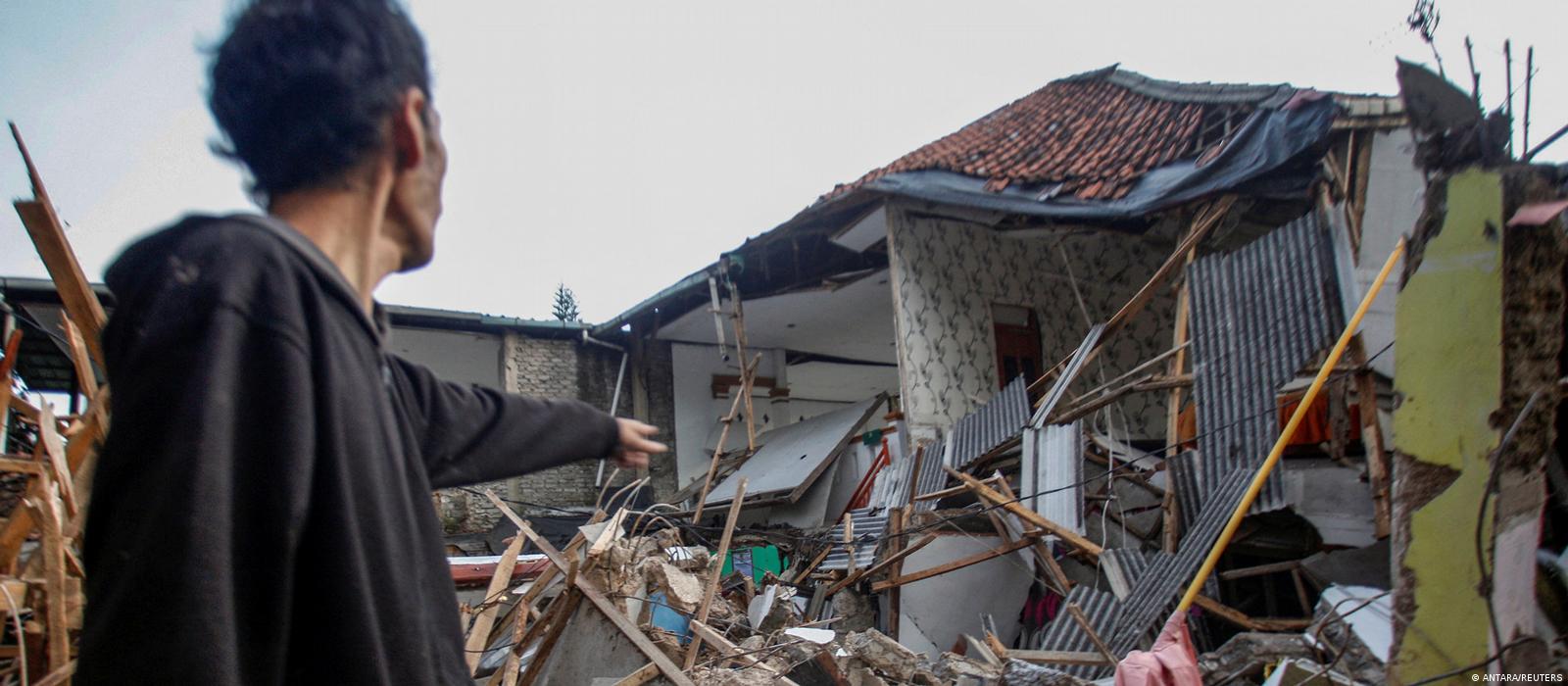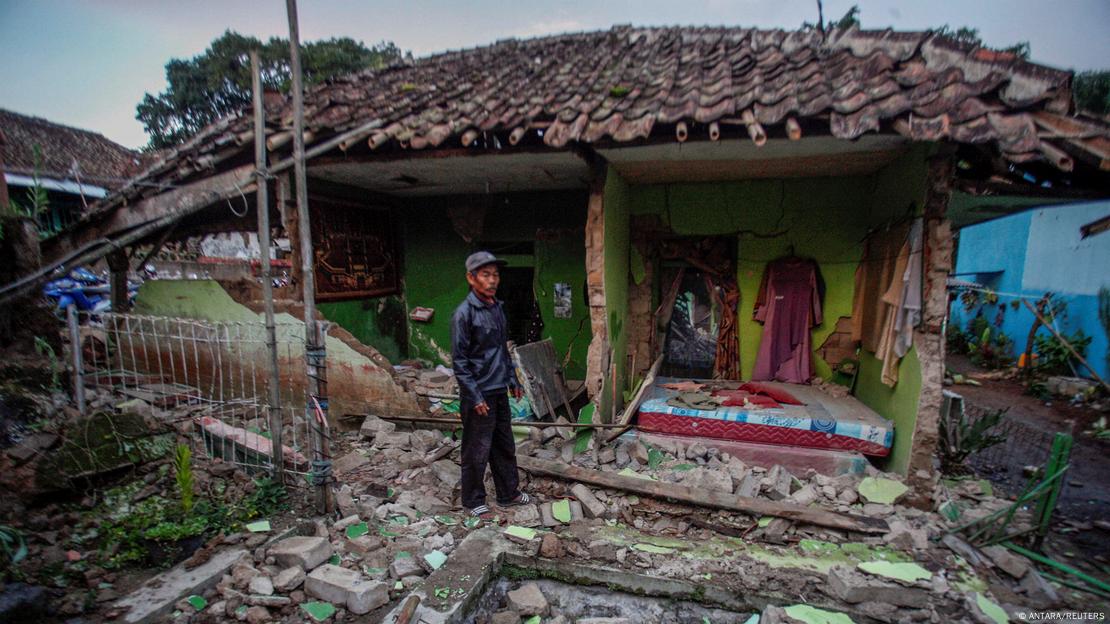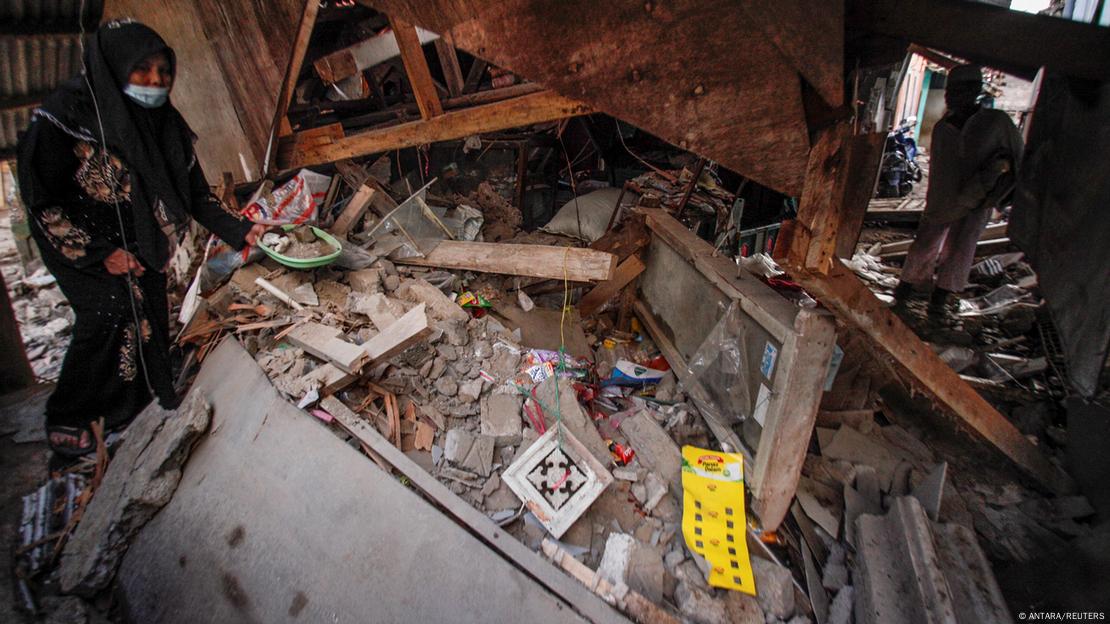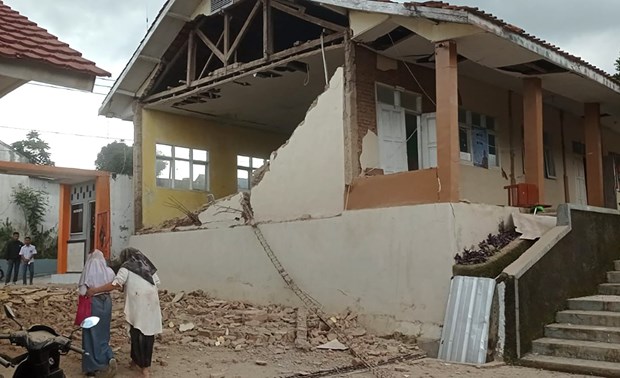
Why Joyland movie stirred controversy in Pakistan
Haroon Janjua
The film has opened in some parts of Pakistan after conservative sections opposed its screening in the Muslim-majority country. DW explores what caused the controversy.
The Pakistani government initially banned the screening of Joyland, a film that explores the relationship between a married man and a transgender woman.
The movie was banned for showcasing "highly objectionable" content, according to the Punjab government, which insists it can't allow its release "in the wake of persistent complaints received from different quarters."
In May, Joyland won the Un Certain Regard Jury Prize and the unofficial Queer Palm award at the Cannes Film Festival. It then became Pakistan's official entry to the Oscars for the international feature film award.
Acclaimed internationally, why did the film land in controversy in Pakistan?
The controversy
Filmed in Lahore city, Joyland tackled the subject of transgender rights in Pakistan. The movie features a married man who falls in love with a transgender woman dancer.
Transgender people in Pakistan often complain of legal and social discrimination. A large section of the Islamic country considers LGBTQ activities "immoral" and "un-Islamic."
In August, the Central Board of Film Censors (CBFC) had granted the filmmakers the license to screen the movie in theaters across the country, but the federal Information Ministry later said that it had stopped the screening of the movie as it did not "conform with the social values and moral stands of our society."
The [film] content is "clearly repugnant to the norms of decency and morality" in line with the relevant laws, according to the ministry's statement.
Saim Sadiq, the movie director, derided the decision as "absolutely unconstitutional and illegal."
"We — a team — are gutted by this development but fully intend to raise our voice against this grave injustice," Sadiq wrote on Instagram last week.
Religious morality vs. human rights
Mushtaq Ahmed, a senator belonging to the conservative Jamaat-e-Islami party, told DW that Joyland goes against "family values and social norms."
"This movie is an act of war against our social values," Ahmed said.
Civil society activists say it is not the first time Islamic sections have called for a ban on movies that promote human rights.
"The film has beautifully tackled the deep-rooted patriarchal issues and attempted to break the myths and stereotypes," Farzana Bari, an Islamabad-based human rights activist, told DW.
"Linking transgender rights to sexuality is absurd. The transgender people have their rights and they need to be liberated," Bari added.
Pervez Hoodbhoy, a physicist and social activist, says that even those who have not watched the movie are vouching for its ban.
Rising violence against transgender people
Some legal experts are of the view that the ban on Joyland is unconstitutional and that it should be lifted in all parts of the country.
"The revocation of clearance certificate by the Punjab censor [board] is completely arbitrary and a capitulation to obscurantist elements, because the film was [earlier] given a thumbs up by the board after it watched it and found it fit for exhibition," Osama Malik, a human rights lawyer, told DW.
"The ban goes against the freedoms guaranteed in our constitution. The [censor] board should not pander to mullahs and must restore the clearance certificate so that the film can be exhibited in the country's most populous [Punjab] province," he added.
Activists say the [partial] ban on the movie would only justify discrimination against the transgender community.
Rights groups point to an alarming increase in violence and hate crimes against the transgender people in the country. According to Pakistan's Trans-Action Alliance, some 91 transgender women have been killed in Khyber Pakhtunkhwa since 2015, with more than 2,000 registered cases of violence across the northwestern province.
Shiraz Hassan, who watched Joyland in Islamabad, says the film "starts with a birth and ends with a death."
"Between this, there is a Joyland; a land where we are seeking joy," he told DW. "The film is not about LGBTQ relationships; it's about Pakistani women, a transgender person, and a patriarchal society. It is a story about a transgender woman, a working woman, a wife, a mother, and a widow," Hassan added.
Edited by: Shamil Shams
Films like Joyland are banned because 'image-conscious' countries like Pakistan have plenty of skeletons in the closet.
By now, you have probably come across an instantly iconic image from Saim Sadiq’s Joyland. It shows a man on the backseat of a motorcycle, carrying a massive cutout of a theatre show dancer. We do not see the face of the man, Haider (Ali Junejo), whose back is towards us. Instead, the cutout of Biba (Alina Khan), a khwaja sirah starlet and Haider’s boss, stares back at us. Much like Biba herself, the larger-than-life cutout demands attention. And much like Biba, the cutout is not easy to put in a corner or hide away.
Haider, the second son in a middle-class family in Lahore, works as Biba’s background dancer. Having to hide his real job from his family, he tells them that he is a theatre manager.
One night, he ends up with the giant cutout at home. He struggles to hide it. Keeping it indoors is not safe — Rana Amanullah (Salmaan Peerzada), his strict father, may see it. So Haider and his wife, Mumtaz (Rasti Farooq), decide to take it up to the roof. But the cutout has to be hidden from the neighbours too. So the couple covers it with a white sheet.
The sheet barely makes a difference. By the morning, the cutout has caught the eye of a concerned neighbour, Fayyaz (Sania Saeed). How could it not? Hiding away something of that scale is no easy task.
Concealment, secrets, hidden truths and repressed desires are all themes Joyland explores. The film raises pertinent, difficult questions. It is no surprise then that there are active efforts to hide and conceal the film in Pakistan. By now, you must also know that the film’s release was barred by the Ministry of Information and Broadcasting in a notification dated November 11, nearly three months after it was first given certification by all three censor boards (more on that later). The decision was reversed on Nov 16. But the film found itself banned again in Punjab.
The back and forth brings to question the role of the censor boards. It also brings into unflattering focus Pakistan’s history of film bans and censorship.
Déjà vu
We’ve been here many times before. WZ Ahmed’s film Roohi (1954) became the first film to be banned in Pakistan. According to an obituary of the filmmaker, the government took issue with the film for generating ‘class hatred’ and for showing an affair between a married woman and a young man. The filmmaker responded to the ban by pointing out that he was only showing the realities of society. The ban was eventually lifted.
The back and forth being experienced by Joyland was also meted out to the original Maula Jat, the censor certificate for which was cancelled by the Zia government. As film historian Mushtaq Gazdar writes in his book Pakistani Cinema 1947-1997, before the authorities could act, Maula Jat’s producers obtained a stay order from the high court against the censor board. The film ran for two and a half years, setting box office records. Finally, when the stay order expired, the police forcibly removed it from the cinemas.
The government’s attempts to defeat and silence Maula Jatt clearly failed. Maula is indestructible. As he himself declares, “Maulay nu Maula na maray, tay Maula naee marda [Maula won’t die unless God kills him]”. Not only did the film amass a cult following and kickstart a sub-genre of gandasa films, a remake is currently setting box office records around the world.
In the decades since, dozens of films have found themselves banned in Pakistan. A Twitter thread by filmmaker Javaria Waseem lists many of them. Recent examples include Durj (2019), Javed Iqbal: The Untold Story of A Serial Killer (2019) and I’ll Meet You There (2020).
The circus of life
Then there is Sarmad Khoosat’s Zindagi Tamasha (2019), which also made its mark internationally at festivals including the Busan International Film Festival, only to have its release barred because of pressure from the Tehreek-i-Labbaik Pakistan (TLP). Much like in the case of Joyland, those who pressured the government into blocking the film had not even watched it. While it was eventually announced that the film will be released in Pakistan in March 2022, it is yet to be released.
Khoosat is also one of the producers of Joyland. Thinking about Khoosat and the question of censorship, one is reminded of his performance as Manto. In the 2015 film/drama, Khoosat delivers Manto’s response to those who accused him of spreading obscenity: “Main tehzeeb-o-tamaddun aur society ki choli kia utaaron ga jo hai hee nangi … Main issey kaprey pehnaane ki koshish bhi nahin karta, isliyeh ke woh mera kaam nahin, darzion ka hai.” Manto questioned how he could undress an already naked society, pointing out that he did not even try to dress the naked society because that was not his job, but that of tailors.
In 2018, the film Manto by Nandita Das was also banned in Pakistan. Das hoped that her tribute to Manto would be able to traverse borders, but it was not meant to be. (The film can now be watched on Netflix. In this day and age, most films eventually do make their way to the audiences.)
One of the reasons for the ban was the presence of scenes that were deemed ‘obscene’ by the censor board. Commenting on the ban, late IA Rehman wrote: “Censorship has always been defended in terms of a need to protect impressionable minds. One hopes Pakistani audiences are not as vulnerable to adult cinema as they were when the Cinematograph Act of 1918 was enforced.”
Rehman Sahib pointed to the need to rethink the policies in place. Similarly, Hasan Zaidi, filmmaker and Dawn’s Magazines Editor, has previously suggested moving from censorship to certification and introducing “an enforced ratings system that trusts the people of Pakistan.” This model is in place in neighbouring India, at least in name. On multiple occasions, filmmakers such as Zoya Akhtar have stressed that their Central Board of Film Certification should not be censoring films, but rather giving films an Adult certificate where appropriate.
In Pakistan, matters are further complicated by the presence of three boards. After the 18th Amendment devolved most ministries to the provincial level, films receive certifications from the Sindh Board of Censors (SBFC), the Punjab Board of Film Censors (PBFC) and the Central Board of Film Censors (CBFC, which oversees the federal capital areas of Islamabad, Rawalpindi, the cantonment areas around the country and the provinces of Khyber Pakhtunkhwa and Balochistan). The three bodies have often been on different pages.
Currently, Punjab’s censor board has blocked Joyland’s release in the province where the film is set. The decision is reportedly under review.
Image conscious
If the tailor’s job is to dress people, what is the job of the storyteller?
To go back to Manto’s words to his detractors: Log mujhe siyah qalam kehte hain, lekin main takhta-e-siyah par kaali chalk se nahin likhta, safaid chalk istemaal karta hoon takey takhta-e-siyah aur bhi numayan ho jaaye. It was not that Manto’s pen was black. He would use white chalk to write on the blackboard, which made the blackboard’s darkness even more prominent.
Artists, writers, filmmakers have long paid the price for shedding light on matters society would rather remain hidden.
It seems many in Pakistan have decided that the job of a storyteller should be to ‘promote a positive image’ of the country. This is not their job. On the show Aaj Shahzeb Khanzada Kay Saath, filmmaker Sadiq spoke about misconceptions regarding what a film is supposed to do. A film’s job is not promotion of any kind, Sadiq points out. Films — specifically good films — are meant to depict, not promote.
As Malala Yousafzai, who is an executive producer of Joyland, writes: “Too often in my country, we expect art to serve as public relations. Tired of seeing negative portraits from the rest of the world, we want stories that cast ourselves as unequivocal heroes.”
There are no heroes in Sadiq’s film. The characters are flawed humans.
One such character is of Biba. The role is brilliantly played by Alina Khan, a transgender woman — a historic feat in itself. In Biba, we have a khwaja sirah character unlike any other we see on our screens. Biba is stern when she needs to be — “Biba nahin, Madam kehna hai mainu [Not Biba, you have to call me Madam],” she tells one of her male background dancers. She is flirty when she wants her way. She is vulnerable when she allows herself to be. She has a guru. She has dreams. She is a human not a joke or a punchline, like so many transgender characters in Pakistani films often are.
Of course, Joyland is not just Biba’s story. And the ensemble cast along with Abdullah Siddiqui’s score and Sadiq’s loving storytelling are brilliant.
But that’s just my opinion. Every Pakistani should have the option of watching the film and forming their own. Audiences may hate it, love it or choose not to watch it — but they should not be robbed of that choice.














:quality(70)/cloudfront-eu-central-1.images.arcpublishing.com/thenational/5PDYBKLLHHJHXIJS7M467C4EXM.jpg)
:quality(70)/cloudfront-eu-central-1.images.arcpublishing.com/thenational/QIKP7K5U7STYRCV3RXOISQVYKY.jpg)
:quality(70)/s3.amazonaws.com/arc-authors/thenational/93b37c8d-ca93-4e4d-b54d-9c3196ae83fa.png)



